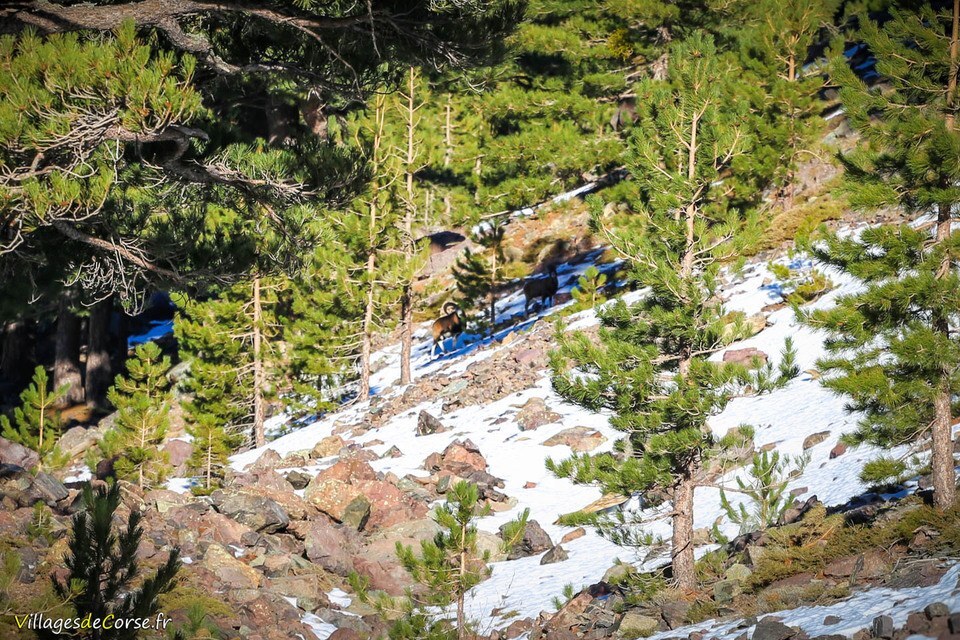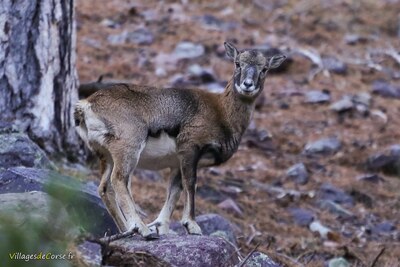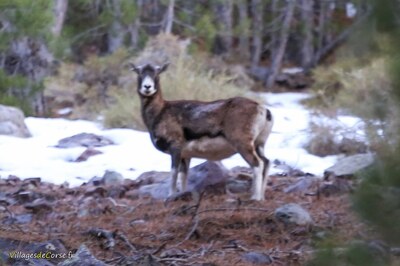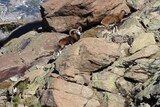Mouflon in Corsica
Mediterranean Mouflon - Ovis gmelini musimon
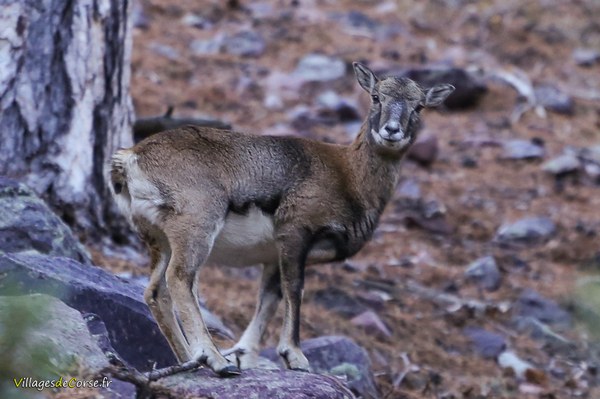
The mouflon is a wild animal belonging to the sheep family, just like its distant domesticated cousin, the sheep. It was introduced by man to the Mediterranean islands of Corsica, Sardinia and Cyprus in the Neolithic period (around 6000 years ago), giving rise to the ovis gmelini musimon / corsicana family - Mediterranean Mouflons - which can be distinguished from Oriental Mouflons or Armenian Mouflons.
An ancestor of the sheep, the mouflon is the smallest of the wild sheep, related to the Urial and Argali, sheep found from Anatolia to their homeland in China and Mongolia, whose finest specimens can weigh up to 200 kg and stand 1.20 m tall at the withers.
Genetic studies have revealed that the Mediterranean mouflon is the result of cross-breeding with domestic sheep.
The mouflon's privileged status on the island
The mouflon - u muvrone - is an emblematic Corsican animal, having inspired the famous music group i muvrini. Its inaccessibility and rarity add to its nobility, making every encounter a privileged moment. The species is protected but endangered, and there are around 600 on the island: two-thirds in the Asco valley, and the remaining third in the Bavella massif. A breeding farm in Quenza is helping to bolster the current population, which has been hit by climate change, human encroachment, fires and disease. These conditions lead to a scarcity of food, which in turn affects the gestation period of the females, reducing the chances of survival of the lambs.
Reintroducing the Mouflon to the continent
In the last century, campaigns to reintroduce the Mediterranean mouflon were successfully carried out in the Alps and Pyrenees. Today, there are over 10,000 mouflons in France.
Physical characteristics
The Mediterranean mouflon is smaller than its continental congeners. It measures just over 70 cm at the withers and weighs 50 kg. In males, the horns are spiral-shaped like the ram's, but wider, longer and more airy. They can be used to assess the age of the mouflon. Their hooves are naturally cut for rocky terrain. The coat is short and dense, with white on the belly, legs and muzzle, and light to dark brown on the back. It has a short tail and erect, pointed ears.
Hornless females
The Mediterranean mouflonne is not always horned, unlike its eastern congeners. This physical characteristic of the island mouflon is the result of evolution due to domestication (visible in the ewe) and recalls earlier crossbreeding with the sheep. In the case of females with horns, these remain very short, and bear no comparison with the long, curled horns of the male.
Rhythm of the mouflon's life
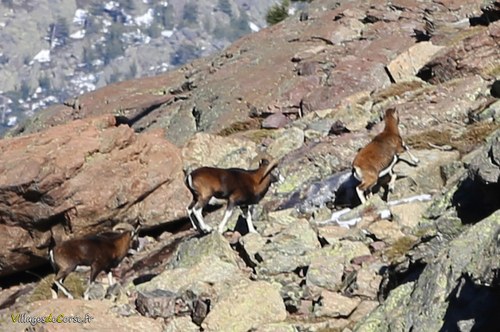
Environment
Contrary to popular belief, the mouflon prefers a mild climate to a cold one. They don't choose to graze their high mountain territory, and snow, when it falls in abundance, is their enemy. For safety's sake, they live at high altitudes in steep, inaccessible areas free of human life.
Moufflons are social animals, moving in small groups. In Corsica, they can be found in the Alta Rocca and on the outskirts of Monte Cintu. In the past, their territory also extended to other parts of the island.
Diet
A diurnal animal, the mouflon's day is punctuated by feeding and breaks. The diet of these ruminants consists of fresh grass and a variety of other vegetation, as well as fruit from shrubs and trees.
Mating and calving
The mouflon's mating season is in autumn. During the rut, adult males engage in spectacular fights that determine the hierarchy within the group between dominant and dominated.
The gestation period for mouflonnes is around 5 months. They give birth in spring, a favorable period for lactation. For the first few months of its life, the lamb will follow its mother's every step and learn to recognize edible plants.
Behavior with humans
At Bavella and Asco, mouflons can be seen in the distance in small groups of 2 to 3 animals. On bare rocky slopes, the ungulate's reaction is to observe and watch without panic, so as to maintain a certain distance from hikers on the mountain.
In adulthood, mouflons are more vigilant and harder to reach than their young offspring, which can be caught a few dozen metres away. In this case, it's not uncommon to see them frozen in curiosity, before moving off.
